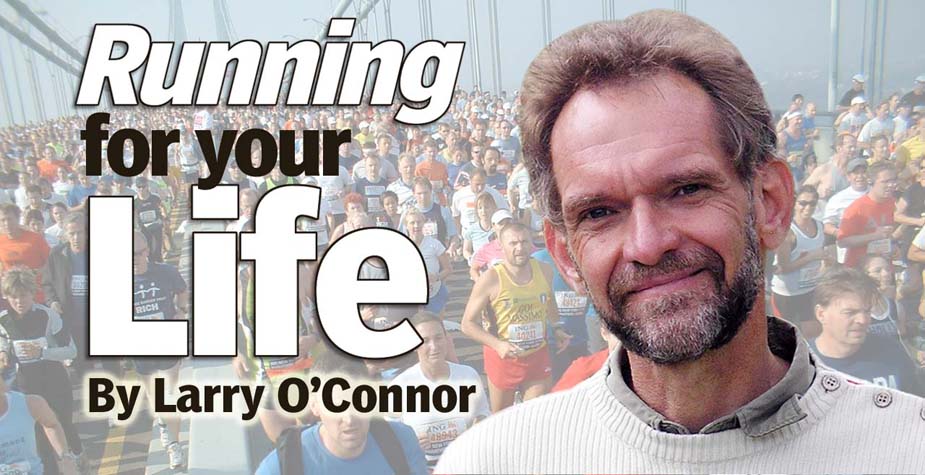This might be a little premature to say. Imagine me as I write this, pausing and knocking on wood. . . . There. Done.
I’ve been running pain-free since I finished the Boston Marathon in 2012. As most running blogs go, I’ve done my share of writing about pain. About how it came about and what I did to try to deal with it (shin splits and forefoot pain, in my case, and in February-March 2011, a massive hamstring tear that kept me away from running for some time). Now, though, I’m compelled to share what I think could be of help to others who, true to this blog’s theme, would like to run for their life.
To recap, in October I’ll be running my seventh marathon and the first since Boston last year. It will be my second running of the Steamtown Marathon in Scranton, Pa., and while I begin my training regimen in mid-June. At 58, I will be shooting for – realistically I’ve come to think – a personal record. While I’ve never really thought that I’d be capable of qualifying for the New York City Marathon, I believe that it’s not out of the question. To do so, I would need to run 3:14 or better. Currently my PR is 3:33:08. But in that race I was suffering foot pain for about half of those 26 miles. I have yet to establish a relatively pain-free marathon mark. Maybe it’s not possible. But, considering my current running and exercise routine, it’s worth a try.
Before my hamstring injury I’d never done much in the way of cross training. Now, it’s as important to me as the run itself. In these non-training months before Steamtown, I run every other day and train on the second day, taking Sundays off. I’m not crazy about it, but on a cross-training day, I set aside forty minutes in the morning. I run a short distance to the gym and then do a series of leg- and core-related stretches and strength sets for about thirty minutes, and the balance I work with weights (again, because of the hamstring injury, I focus on leg muscle-focused weight sets).
As for the foot pain and shin splints, I haven’t run without prescription athletic shoe insoles since Boston, or without my snazzy calf compression sleeves (not exactly, but since wearing them I’ve not had even a hint of shin splint pain). I also use a patellar tendon support for my right knee. (I’ve never experienced any significant knee pain but I did at one time feel a mild strain in my right knee, so I use the little Velcro support strip which gives me as much mental comfort as physical.)
All of this is to say I believe you can get to a place where you are running for your life if you listen to your body – and when you’re ready – to run for fitness and then for speed, strength and distance.
Next: Food For Thought
